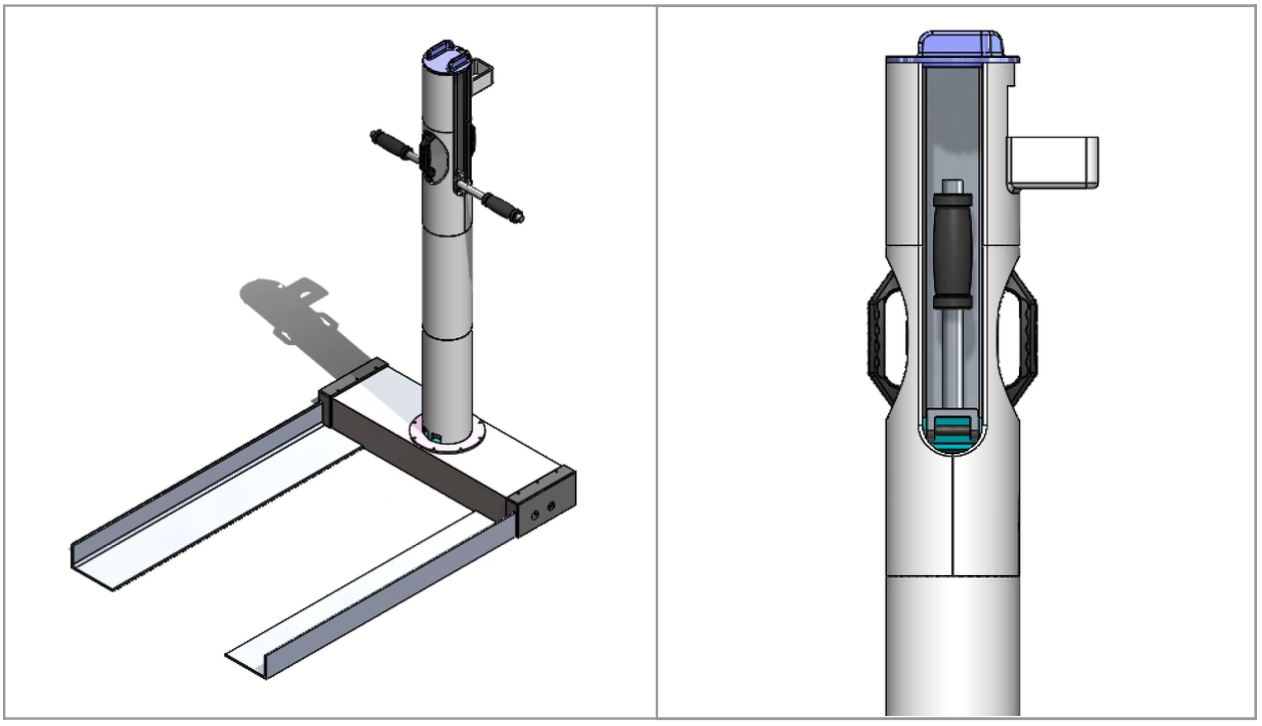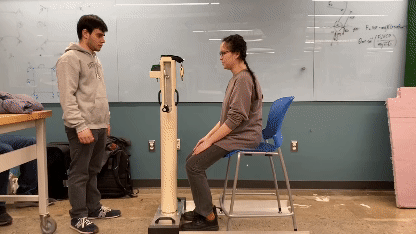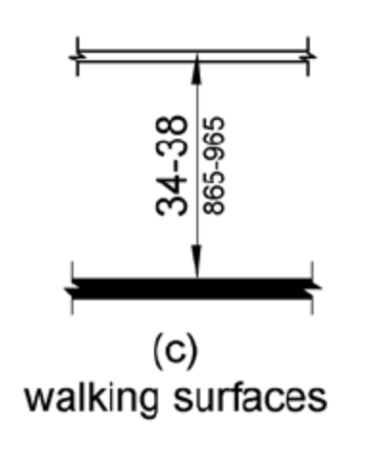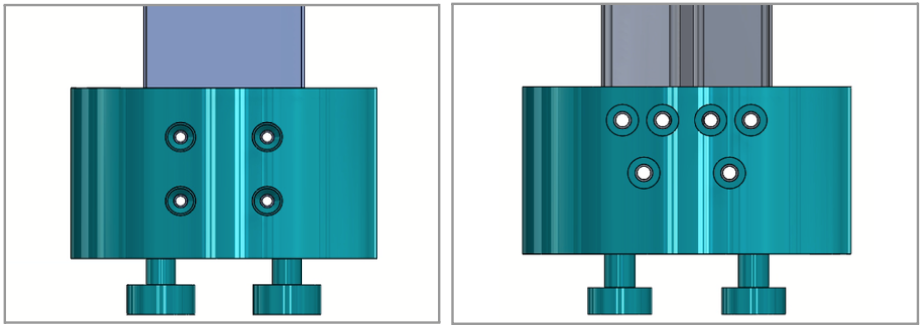operation
disassembly (1:22s total)
Stand Up Enabler
portable standing & exercise structure (2024)
People with spinal cord injury often use wheelchairs to navigate daily life. Frequent exercise can help alleviate discomfort caused by prolonged sitting by decompressing the spine. A variety of standing frames exist, however, few options thoroughly consider both portability and safety. The Stand Up Enabler aims to address both of these factors in its design.
Process
During early stages of development, the Stand Up Enabler team consulted with the client to learn about his vision for the product and gather information about dimensional constraints, such as his wheelchair model. By inspecting competitor products and analyzing patents, we identified opportunity areas to differentiate the project focus.
To expand our understanding of the stand up process, the team reviewed a study following the standing motions of a person with limited lower body mobility. Finally, we researched existing design regulations for assistive devices and identified associated safety factors to target in the analysis.
competitor product comparison
While the EasyStand StrapStand and Glider include a range of safety and comfort features, they are expensive and not designed for portable use. On the other side of the spectrum is the Parastander Frame, which is a lightweight metal frame created for mobile, outdoor standing.
Despite its portable design and lower price, the Parastander Frame’s only safety feature is a fabric belt. The Stand Up Enabler team planned to achieve a solution in between the EasyStand and Parastander products by balancing portability with thorough safety precautions in the design.
existing patents
ADA 505.4 handrail height
When exploring current mobility device patents, we found that the majority of claims focused on assistive standing rather than portability. Multiple patents relied on motorized mechanisms to raise the user into a standing position, shown above. While these designs effectively help the user stand, they eliminate the exercise element in between the two states.
Through the synthesis of client conversations, competitor analysis, and regulations research, we created a list of concrete product requirements. The final structure must be portable with simple assembly and safe conditions under the load of the operator. It must also include horizontal handlebars in front of the user and a wheelchair-compatible platform.
base locking mechanism iteration
enclosure pieces
The team brainstormed potential designs based on conversations with the client, competitor research, and anticipated steps of operation. Since the project required several custom parts, the team planned to iterate on the design in SolidWorks before submitting a final version to the machinists.
By consulting several times throughout the semester, the machinists provided valuable feedback that helped the team accomplish a design suitable for manufacturing.
Outcome
To prevent user interference, internal mechanical components are housed in a 3D printed enclosure. The total disassembly process takes 1 minute and 22 seconds to complete, shown below. In the collapsed state, the largest dimension is 4 feet.
The Stand Up Enabler is a portable standing and exercise structure for users with limited lower body mobility. The design consists of two subsystems—a central post with folding handlebars and a locking base with L-channel wheelchair guides.
CAD and operation demo
CAD and disassembly demo











